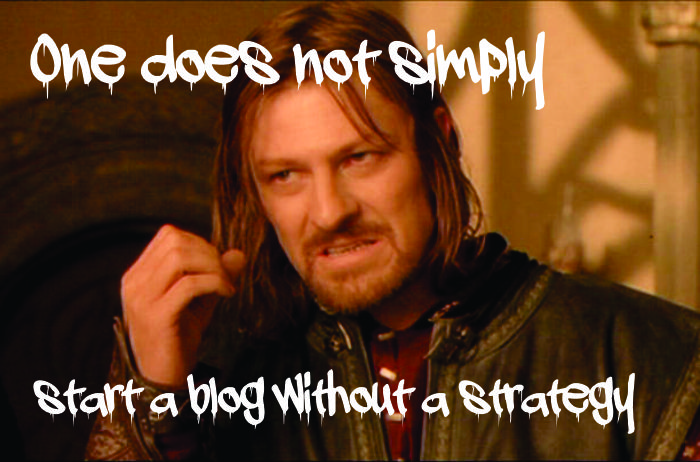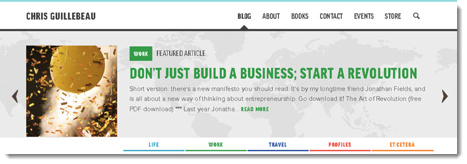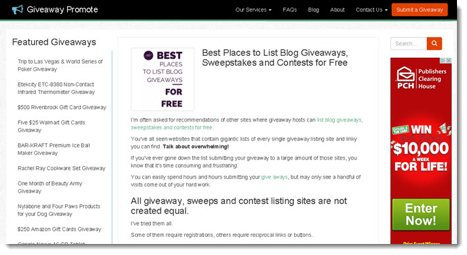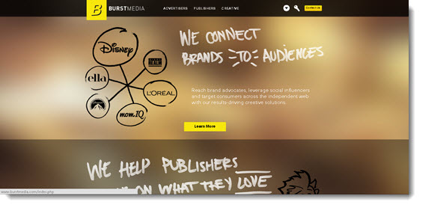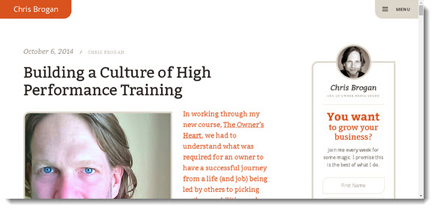- Posted on November 20, 2014
- in Blog
How To Create a Strategic Blogging Plan
After we looked at
- Why blogging is important for business: Blogging for Business - Blogs are like Puppies
- How to figure out what to blog about: Find Your Blog Topic
- How to make your blog your own: Find Your Blogging Voice
Don’t miss the free downloads at the end of the post!
We are now getting into strategy:
How create a strategic blogging plan:
A blog’s success is not an accident. Like any business, the best blogs begin with a plan. Successful bloggers don’t just jump in randomly writing topics as the thoughts occur. Success is achieved from having and following a strategic blogging plan, which guides them toward their goals.
Even if you are blogging for pleasure, a strategic blogging plan is needed to build an audience and grow your blog. It’s estimated there are over 152 million blogs on the internet right now and a new blog is created every half-second. With odds like that, you need to have a plan to stand out among the crowd and grow your readership.
A good blogging strategy includes researching and planning your content, monetization, and understanding your audience.
What is a strategic blogging plan and why do you need one?
A strategic blogging plan is a roadmap that shows you what you need to do to get where you want to go. It helps you determine where to spend your time and money as well as when to get help.
Your blogging plan will be a systemized approach to the content you create, the advertisers and products you promote, and the ways you build a following. This plan is what gets you from point A (where you are now) to Point B (where you want to be).
Your plan helps you set your course and stay on it. Your plan will also allow you to prioritize the order in which you need to do things. Prioritizing is important because it enables you to focus on each step individually, as it comes. When you focus effectively, you are less apt to find yourself sidetracked and wasting your valuable time.
A plan assists you in clearly, defining what you need to achieve. When your needs are clearly stated, there is no second-guessing what you should do, when you should do it, or why you should do it. It’s all right there in the plan.
Your blogging plan will include your content plans, how you will build traffic and gain readers, how you will grow the blog, how you will monetize the site, and your marketing plans.
It might seem overwhelming to create a strategic blogging plan, especially in the beginning; however, it’s not difficult when you break it down into easily managed, steps. In this report, we’ll look at setting up strategic plans to create content, grow your audience, monetize the site, and partner with other people with whom you can cross-promote products.
Content Strategic Plan
In order for your blog and content to be a real success, you must know your readers well. Here are a few questions you can answer that will help you identify, plan, and create the content your readers crave.
- Who is your target market? What age group, interests, or gender do you want to draw to your blog? What questions and problems do they have? When you get right down to it, your readers are probably a lot like you. It’s likely that they have the same questions and problems that you had at an earlier time. They see that you’ve “been there” and have more experience. Experience, to your readers, translates into the idea that you have many of the answers they are looking for.
- To whom are you writing? Who is your number one fan? When you think of writing for many readers, you may envision a faceless crowd rather than the individual faces of people who all want the same basic things. If/when this happens, your writing becomes impersonal and uninteresting. Visualize and write to one reader, your ideal reader. With this reader in mind, your content will be more personal, engaging, and persuasive
- Do your topics excite you? Write about the things you know and love. Don’t write about something just because you think it will grow your readership. Most likely, it won’t. It may even leave you feeling that you failed yourself and your readers. When you enjoy your subject, your readers sense it and they will enjoy it too. In a manner of speaking, the enthusiasm becomes contagious and they want to share their discovery, your content.
Now that you have a good idea of who your readers are as well as their want and needs, it’s time to think about your blog content.
Content is the foundation on which your blog is built. Successful blogs have a solid content foundation, which is planned down to the smallest detail. Planning your content is simply a matter of mapping the topics and types of content you will provide to your ideal reader over the next 6 to 12 months.
In the beginning, use a big, monthly desk calendar. It is a great planning tool because it gives you a view of the big picture. Write your content ideas in pencil for easy modifications. In addition, you may also want to use a smaller daily calendar or notebook. This is great for all little details about each piece of content. If you prefer electronic organization, you can always transfer the calendar ideas to a document or another calendar as your plans develop and finalize.
When planning your content, you’ll want to consider how often you want your readers, as well as the search engines, to visit your blog. Generally, blog content should be scheduled to post 2 to 3 times per week. Other, more complex types of content may be scheduled once a month or quarterly, depending on its purpose. The key is to create content on a regular basis.
Along with the purpose, there are a couple of other things to take into account as you plan your content.
- What’s the purpose of the content? Do you want it to drive traffic to your blog, get readers on your mailing list, or to make a sale? The purpose for each piece of content is different so it’s important that you write the purpose down. This makes it easier to stay focused and moving forward toward your goal. You can make any needed adjustments later, if needed.
- When will you publish the content? Since content can be preloaded and scheduled in a variety of places, you have a great deal of control over when your content “goes live.” Blog content can be written months before its actual posting time. This makes it easy to space your content out during the week. If you choose to schedule any or all of your content, you may also want to keep a record of the day it’s scheduled along with the actual posting date.
- Where will you publish it? Where you publish depends on the content’s purpose. For example, if you want more traffic to your blog, you may publish content to your Facebook page or other social media, and have it direct readers back to your blog to take some type of action. If your goal is to get readers to purchase a product, you may choose to direct them to the sales page by sharing special content through your newsletter, social media, or a special announcement on your blog.
Once your content plan is finished for the next few months, the next thing you’ll want to do is create a plan for building your audience. Without an audience, you’re just writing for yourself and that just won’t get you very far.
Grow Your Audience
Your audience is crucial to the success of your business. If you are trying to write posts that appeal to everyone, you will have problems getting a loyal readership. The key is to build a relationship with readers who are already interested in your topics. That’s why they should be laser focused.
Creating a blogging plan to grow your audience begins with asking yourself several questions. As you create the plan, make sure you include how you will gain readers, the ways you can help your readers, and places you can interact with them. Make sure you have a way for readers to join your email list and your social media channels.
- Are you available to your readers outside your blog? Connect with your readers through your blog comments and on social media networks. Respond to personal emails. Do you build long-term relationships with your readers? You should be. Get them on your list and in your social media circles. Then, let the building begin.
- Are you creating regular content? Whether you schedule your posts for monthly, weekly, or daily publishing, readers need to see you. Send regular emails to your list and post updates to your social media accounts. Create a regular posting schedule and stick with it.
- Can your fans find you? Do you have a promotional strategy that guides your readers back to your blog? Do this by doing guest posts on related blogs, commenting on related blogs, being active in the communities where your readers gather, and by providing valuable content answering questions readers ask. Spend time with your mentors and others dedicated to your success. Build personal relationships and partnerships with some of them.
- Are you inviting people to become members of your blog community? Ask people to sign up to your email list at the end of every article. Give them a compelling reason to sign up by offering a free report, templates, or a video related to your blog topic.
- Are you telling your story? Lead one or two people you know. Work with them to get remarkable results and tell the story on your blog. Your stories are the most compelling type of communication. Chris Guillebeau’s blog, The Art of Nonconformity, is a great example. He writes about his quest to visit every county in the world.
- Are you being authentic and unique? You need to be real and be yourself to draw readers to your blog. You may feel uncomfortable at first. When you’re upfront with people, it opens the door for them to see you — flaws and all. That can seem scary but you don’t have to be perfect. Your honesty, self-acceptance, confidence, and expertise will draw readers to you.
- Where are you promoting your blog? Pass out business cards to everyone. Join Twitter, Google plus, Facebook, LinkedIn, and other social media sites to begin building readership.
- Do you participate in blog-giveaways and contests? Draw new readers in with a give-away that requires the reader to follow your blog in some format. Begin by looking on Twitter for related giveaways and on dedicated giveaway sites. Along with new readers, you may even end up finding potential partners.
- Do you make it easy for people to follow you? Do you have a Twitter or Pinterest account for your blog? Is there Facebook page or group? How about a contact page or email address? Make sure your connection points are prominently placed and very visible to your readers.
Starting a blog is fun and exciting, whether it’s for personal reasons or business ventures. Having a blog that only has five followers and just sits there is quite discouraging to a new blogger. Growing your audience for your blog won’t happen overnight. It requires consistency and a commitment to the blog. Answer the above questions to start planning your audience growth strategy.
Creating a Monetization Plan
Your blog will most likely be a large part of your business and source of income. Because of this, it is important to create a plan for monetizing your blog. Your burning questions may now be how do you monetize it and what monetization method is the right for you?
Your monetization plan needs to begin with your blog content. Hopefully, you’ve already made a content plan for the year or at least for the next six months. Knowing the content you will be sharing will help you determine the types of monetization you should be doing.
For instance, maybe you have a cooking blog. Your content for the next month focuses on making healthy food choices in the winter. One type of monetization for this is to create an eBook or cookbook featuring the dishes you create. Another option might be to promote advertisers of healthy foods.
Of course, you can’t just put any old ad on your blog and expect it to begin making oodles of money, especially if you don’t put in any effort to build your blog.
You need to pick the monetization method that you’ll use from the start. Here are some tips to set up the monetization plan for your blog:
Know the focus of your blog.
What’s the focus of your blog? A broad niche might have a lot of traffic coming into your blog and can be a good source of income. Most bloggers will have a narrower focus. Your audience will be focused on that specific niche. Figure out what types of monetization method works best for your niche. Is it affiliate products, your own products, paid advertising?
Type of monetization
What types of monetization are available? Which one is right for you? Can you implement more than one? Will you create your own product or sell other people’s products or services? These are all questions you need to answer when creating your monetization plan.
Here are seven methods to monetize your blog:
Method #1: Information products you create.
Information is one of the most common ways to monetize your blog. Since the inception of the internet, selling knowledge has become huge. Information products such as eBooks, videos, audios or print books are all good sellers. They can be packaged as a bundle or sold individually.
Your blogging monetization strategy should include which products you want to create and when you will be introducing them to your readers.
Method #2: Affiliate Marketing
Affiliate marketing is one of the quickest ways to begin monetizing your blog. Affiliate marketing involves promoting products and services of other merchants to your readers. You receive a percentage for each referral you make that buys their product. One of the most common affiliate merchants is Amazon.
Other popular affiliate networks include Commission Junction or ClickBank. Or you can work directly with merchants once your blog becomes established.
Method #3: Services, Consulting or Coaching
This is an indirect way of making money with your blog. You use your blog to build a reputation and an audience. Then you offer your services such as a service like graphic design or consulting or coaching your followers in their niche. The one drawback is this will be trading your time for money.
Method #4: Display advertising
When you think of making money on your blog, this might be the first type of monetization you think of. It is the banner and text adds you see on many sites. There are a couple of different ways to go about this. One is to sell ads directly to advertisers/merchants the other is to run network ads from a variety of sources like Google Adsense, BurstMedia (http://www.burstmedia.com/) or Tribal Fusion (source: https://www.tribalfusion.com/SmartPublishers/). You can choose to use just one method or both.
Method #5: Physical products
If you have your own physical product line, you can use your blog as a part of your store. For example if you are a fabric artist, you can have an online store that’s a section of your website or at located somewhere else like Etsy.com to sell your fabric art and use your blog to build up your reputation and audience by offering them updates on upcoming products, how to use the product or any other type of information that is relevant to the product.
Method #6: Membership or subscription programs.
With this method you provide a paid premium level program that offers more in-depth information including tutorials and one-on-one help from you. With this monetization plan you get continuity and a steady income stream.
Method #7: Speaking gigs
If you are an expert and become known as an expert in your blog topic, you can offer your time to speak at conferences and other events for pay. This is a method many top bloggers are doing. Chris Brogan (http://chrisbrogan.com/) does this with his influence from blogging.
Method #7: Online Events
Online events can be webinars or conferences that your attendees pay to attend or get sponsors to pay to put it on. Online events can be challenging to get people to attend, especially when first starting out, but they can be very lucrative.
Know your Potential Traffic.
When you start your blog, you might not be seeing any real traffic coming to your blog yet. But with time and building your blog, your traffic will likely increase. You can create your monetization plan based on your potential traffic. Pretend your blog has a high amount of traffic. What will you do to monetize it with all that traffic?
Know your Audience.
Knowing who your audience is helps you determine how you can make money from your blog. If you’re blogging to people who are just looking for information, you’re going to have trouble getting them to buy anything you try to sell. They may click on ads on your site instead, though. On the other hand, if your audience is looking for specific answers to their problems, you have a good opportunity to sell them products that provide that solution either with your own products or through affiliate products.
Choosing the right type of monetization for your blog depends on several things. Begin by creating a plan to guide you. Keep in mind who your audience is, the amount of traffic you can potentially generate, and the types of monetization available to you.
Partnering with Other Bloggers and Product Sellers
If you’ve been blogging for a while, you might already be partnering with other bloggers and product sellers. If you’re new to blogging or haven’t yet dipped your toes into the partnering pool, you might be curious about how this can help you grow your blog’s traffic and income. As you continue to grow your traffic, build an audience, and become an expert in your niche, you will eventually get noticed by other bloggers, brands, and product sellers who want to work with you. Before this happens though, you can approach those you are interested in working with.
There’s a lot you need to know: how to find a contact in the brand or blog you want to work with; how to write the perfect pitch; contracts and agreements; how to put your campaign to work; and how to track the results. Most of all you need to decide if the brand is one you want to work with.
You need a plan for building lasting partnerships with other bloggers and product sellers.
- The first thing you need to realize is that we are all human. Behind every blog, every product, and every brand is a human being, hopefully, one who cares about their product or blog. Mashable.com may be a big blog but it started with Pete Cashmore blogging about his passion.
- Pick a few blogs in your niche you want to partner with. Start interacting with them on their social media channels. Interact with them on Twitter. Ask to join their Facebook page. Take time to leave comments on their blogs.
- Don’t be afraid to address bloggers who you think are bigger than you. Make a list of the blogs, their contact information you would like to partner with and begin crafting a personal message to them.
- Create your media kit. Having a media kit will help you stand out to potential partners and convince them that working with your is the right investment for them. Your media kit should include important information about your blog’s focus, a brief description of your target audience, any traffic statistics and reach you have, as well as your contact information.
- What type of campaign will you offer? What can you do for them?
- Write content for each other.
- Social media cooperation by sharing each other’s posts.
- Commenting on your partner’s blog to add to discussions.
- Mentioning your partner’s link on your blog, thank you pages and other relevant places you share content.
- Offer the partner one of your services for free.
- Write reviews of their products, services or pet projects.
- Create a lasting relationship with your partner. You want to be able to build upon the alliance instead of just a one-time sell.
- How do you pitch a partnership?
- Don’t use “Dear Sir\Madam.” Don’t use the mail merge. Personalize your message. You can use templates to save time but customize it before sending it.
- Prove you actually follow their blog by stating the value their blog has given you and the posts that made you think.
- Don’t tell a story. Get to the point.
- Remind the potential partner how they will benefit from the partnership.
- Be honest. Don’t make fake compliments about being a huge fan of their blog.
- Respect their time, the audience they’ve built and be to the point about your intentions.
- Make sure the blog’s niche fits with your niche. The two blogs should be a good fit in terms of aesthetics, values, and audience.
- Be professional. Be open to the other blogger or product seller’s ideas about what works best on their sites and resonates with their readers.
- What can you offer to make the partnership more valuable? Have specific social media goals set and promotion strategies in place.
Take your blog to the next level by partnering with other bloggers and product sellers. You can both benefit from the alliance with more traffic and income as well as build a lasting friendship. Do your research on the other blogger or product seller’s audience. Are they a good fit for your blog? Build a good personalized message to pitch to them. Let them know your ideas on how your can help them whether it is for more traffic or in the form of earning more.
See, creating a strategic blogging plan doesn’t have to be overwhelming. Once you break the process down into small steps, it becomes much easier to do. Follow the steps in this report as a guide to help you along the way.
Downloads for you
For those of you that want to get serious about blogging I have two downloads:

